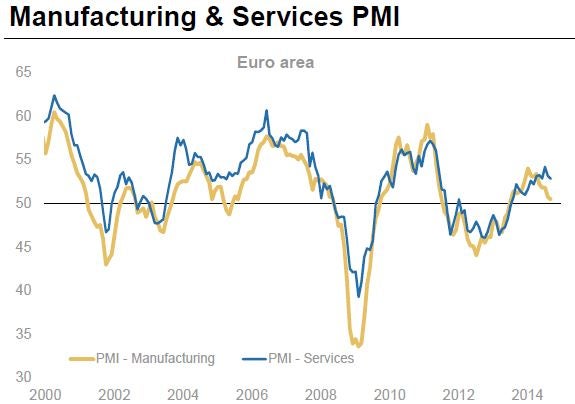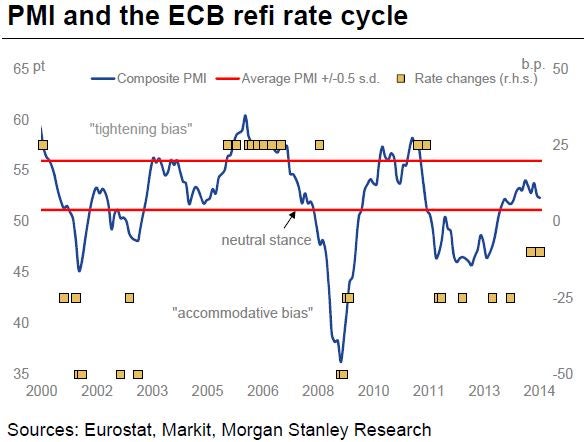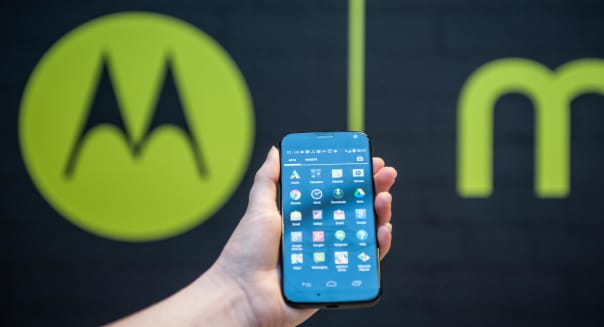BERKLEY, Mich. — Many legally married gay and lesbian couples are delighted with the change in federal income tax rules that treats them like other married couples.
But state-by-state rules continue to create tax-time turmoil.
Alan Semonian, a certified public accountant at Ameritax Plus in Berkley, Mich., said he has prepared tax returns this year for more than a dozen same-sex couples in Michigan who used to do their own taxes but gave up.
"They realize they're in over their heads," Semonian said.
For the 2013 tax year and going forward, same-sex couples who are legally married generally must file using either married filing separately or married filing jointly on federal income tax returns. This is the first year that legally married same-sex couples are required to file federal tax returns as married.
"Unfortunately, these are not the years you can use TurboTax," said Janis Cowhey McDonagh, partner and co-leader of the Lesbian, Gay, Bisexual & Transgender Practice group for Marcum in New York. "I can't imagine how many mistakes are being made out there on these filings."
Michigan and some other states that do not recognize same-sex marriages still require couples to file state income tax returns as single filers.
Gay couples may need 5 returns
In Michigan, a same-sex couple married in a state that recognizes their marriage would need to prepare five tax returns and file three of them.
First, the couple must prepare and file a federal return using a married status.
STORY: Indiana bill specifically bans same-sex couples' joint returns
STORY: Married gay couples can file joint returns, IRS says
Then, they must prepare two separate federal returns, as single filers, so Michigan returns can be based on those two returns. Then they have to prepare and file two separate state returns as single filers for Michigan.
"My thoughts are, 'Why do we have to do this?'" said Cheryl Pine-Stanczyk, 50, of Oak Park, Mich. "That's ridiculou! s."
She and wife Jenny Stanczyk, 46, were legally married May 26, 2011, in Davenport, Iowa, where same-sex marriages are legal. The couple is filing a married-filing-jointly federal return but still must file two separate Michigan state returns for the State of Michigan.
"It's an extra filing fee" for added forms, said Pine-Stanczyk, who doesn't know how much extra the cost will be as the women have not received a bill yet from their tax preparer. While they are parents together and own property together, filing as single in Michigan means they must break up credits and deductions.
"When it's time for taxes, we have to sit down and split things up, which makes no sense," Pine-Stanczyk said.
"How do you divide up a house? Who's going to get the credit?" Pine-Stanczyk said. In some years, Stanczyk was working and Pine-Stanczyk was in school, so Stanczyk took deductions.
Pine-Stanczyk now works for the state's child protective services office in Pontiac, Mich.; Stanczyk works as a teacher for Warren Consolidated Schools.
Where married matters
Lisa Greene-Lewis, a certified public accountant for TurboTax, said same-sex couples in the 17 states that recognize same-sex marriage are more comfortable doing taxes themselves, and TurboTax has seen some same-sex couples come back to their software.
It is far easier to file one federal and one state return, so it's easier to prepare taxes by oneself, she said.
When filing a federal return, the key question for same-sex married couples this tax season is where was the couple married?
"It's not universal. It's going to matter where you live and it's going to matter where you got married as a couple," said Managing Editor AJ Smith of SmartAsset.com, which offers blogs and other information on financial topics.
For the federal return, the same-sex couple must be married in any location that recognizes same-sex marriage.
An example: If the same-sex couple married in New York, which allows same-sex c! ouples to! marry legally, but lives in Michigan, they would file their federal tax return either married filing jointly or married filing separately.
In Michigan, same-sex marriages continue to be prohibited until the U.S. 6th Circuit Court of Appeals in Cincinnati hears formal arguments. U.S. District Judge Bernard Friedman struck down a 2004 state constitutional amendment that says marriage is between a man and a woman, but appellate judges granted a temporary stay of the ruling the next day and later extended the pause indefinitely.
Should a couple amend?
Terry Stanton, a spokesman for state Treasurer Kevin Clinton, said it would be "inappropriate and imprudent to speculate before the court ruling" on how Michigan would treat same-sex couples on tax returns in future years.
On the federal level, the U.S. Supreme Court stuck down the federal Defense of Marriage Act in June 2013 and made it possible for the IRS to recognize gay marriage on federal income tax returns.
Some two-income, same-sex couples could be paying more now; others might find a lower tax bill if one spouse has a much higher-paying job than the other.
On the plus side, a same-sex married couple no longer would have to treat employer-provided health coverage for spouses as taxable income, as in the past. Putting savings into a spousal IRA also becomes a possibility.
If legally married before 2013, too, some same-sex couples could consider filing amended returns for previous tax years, such as 2010, 2011 or 2012, if they think they would pay significantly lower taxes.
"It's an option. It's not required," Semonian said.
Experts say some same-sex married couples might want to amend returns to exclude previous taxable income, such as health insurance.
Filing amended returns is not a simple decision. The loss of some tax breaks could offset other potential gains. And paying a tax preparer to file amended returns increases the costs.
Susan Tompor also reports for the Detroit Free Press.


 Mark Lennihan/AP For top U.S. retailers, free delivery is now the norm. That is good news for shoppers, but not so much for investors. During the just-ended holiday season, outlets from Target (TGT) to Walmart (WMT) to Amazon (AMZN) expanded their free-delivery options, adding more items eligible for free shipping. They also did away with minimum spending thresholds to qualify for the perk. Yet as more U.S. shoppers view free shipping as their right, retailers struggle to make a profit online. That struggle will become evident in coming weeks when companies report financial results for the holiday quarter, analysts said. "For most companies, it is a very expensive proposition to try to offer fast and free," Steve Osburn, director of supply chain for consulting firm Kurt Salmon, said in an interview. "It's really eating away at the margin dollars at some of these retailers." Shipping remains a key battleground in the escalating war between brick-and-mortar retailers and Amazon.com Inc, with both sides spending big on logistics. Offering free shipping has long been standard practice during the holidays, but in 2014, retailers leaned on it heavily all year long. What Amazon Says (and Won't Say) The number of online purchases in the United States with free delivery hit a high of 68 percent in the third quarter of 2014, according to industry-data tracker comScore, up from 44 percent the previous year. Amazon said that it saved customers $2 billion in shipping fees over the holidays. Much of those savings came via Amazon's Prime program, which offers free shipping on most items for a $99 annual fee. The company declined to share the previous year's figure. Nor would it share estimates on how much more Prime customers bought compared with others, which would provide some insight into how much Prime might boost Amazon's revenue. Forrester Research analyst Sucharita Mulpuru estimates that Amazon loses $1 billion to $2 billion a year on U.S. Prime shipments. Other retailers, including Target and Walmart, are removing minimum-spending thresholds on free shipping to entice consumers, consultants said. Just over half of companies surveyed by Kurt Salmon eliminated those thresholds for the 2014 holiday season, up from 5 percent the previous year. Perks Come at a High Price for Investors Amazon's shipping costs during the first nine months of 2014 rose 32 percent, compared with 29 percent in the same period of 2013. This growing subsidy for customers might give investors more reason to dump Amazon shares. The company's stock declined 22 percent in 2014 even as the U.S. stock market, as measured by the S&P 500 (^GPSC), gained more than 11 percent. Target said in November that growing online sales were pressuring margins, due in large part to higher shipping expenses. Much like Amazon, Target offers free shipping year-round for users of its membership card. Online orders account for about 2.5 percent of Target's overall revenue, or roughly $1.85 billion out of the $74 billion in annual sales analysts are forecasting for the current fiscal year which ends on Jan. 31, 2015.
Mark Lennihan/AP For top U.S. retailers, free delivery is now the norm. That is good news for shoppers, but not so much for investors. During the just-ended holiday season, outlets from Target (TGT) to Walmart (WMT) to Amazon (AMZN) expanded their free-delivery options, adding more items eligible for free shipping. They also did away with minimum spending thresholds to qualify for the perk. Yet as more U.S. shoppers view free shipping as their right, retailers struggle to make a profit online. That struggle will become evident in coming weeks when companies report financial results for the holiday quarter, analysts said. "For most companies, it is a very expensive proposition to try to offer fast and free," Steve Osburn, director of supply chain for consulting firm Kurt Salmon, said in an interview. "It's really eating away at the margin dollars at some of these retailers." Shipping remains a key battleground in the escalating war between brick-and-mortar retailers and Amazon.com Inc, with both sides spending big on logistics. Offering free shipping has long been standard practice during the holidays, but in 2014, retailers leaned on it heavily all year long. What Amazon Says (and Won't Say) The number of online purchases in the United States with free delivery hit a high of 68 percent in the third quarter of 2014, according to industry-data tracker comScore, up from 44 percent the previous year. Amazon said that it saved customers $2 billion in shipping fees over the holidays. Much of those savings came via Amazon's Prime program, which offers free shipping on most items for a $99 annual fee. The company declined to share the previous year's figure. Nor would it share estimates on how much more Prime customers bought compared with others, which would provide some insight into how much Prime might boost Amazon's revenue. Forrester Research analyst Sucharita Mulpuru estimates that Amazon loses $1 billion to $2 billion a year on U.S. Prime shipments. Other retailers, including Target and Walmart, are removing minimum-spending thresholds on free shipping to entice consumers, consultants said. Just over half of companies surveyed by Kurt Salmon eliminated those thresholds for the 2014 holiday season, up from 5 percent the previous year. Perks Come at a High Price for Investors Amazon's shipping costs during the first nine months of 2014 rose 32 percent, compared with 29 percent in the same period of 2013. This growing subsidy for customers might give investors more reason to dump Amazon shares. The company's stock declined 22 percent in 2014 even as the U.S. stock market, as measured by the S&P 500 (^GPSC), gained more than 11 percent. Target said in November that growing online sales were pressuring margins, due in large part to higher shipping expenses. Much like Amazon, Target offers free shipping year-round for users of its membership card. Online orders account for about 2.5 percent of Target's overall revenue, or roughly $1.85 billion out of the $74 billion in annual sales analysts are forecasting for the current fiscal year which ends on Jan. 31, 2015.  Reuters
Reuters 





 Popular Posts: 5 Low-Beta, High-Yield Dividend Stocks for a Market Crash5 Stocks to Buy for July5 Stocks to Sell for July Recent Posts: Did Home Depot Just Legitimize 3D Printing Stocks? JPMorgan Earnings Beat Low Expectations (JPM) The Top 10 S&P 500 Dividend Stocks for July View All Posts JPMorgan Earnings Beat Low Expectations (JPM)
Popular Posts: 5 Low-Beta, High-Yield Dividend Stocks for a Market Crash5 Stocks to Buy for July5 Stocks to Sell for July Recent Posts: Did Home Depot Just Legitimize 3D Printing Stocks? JPMorgan Earnings Beat Low Expectations (JPM) The Top 10 S&P 500 Dividend Stocks for July View All Posts JPMorgan Earnings Beat Low Expectations (JPM)  Like Citigroup (C) earnings on Monday, JPMorgan was able to exceed low expectations, which were driven by a slowdown in mortgage lending and vapor-thin trading volumes, especially in the lucrative fixed-income market.
Like Citigroup (C) earnings on Monday, JPMorgan was able to exceed low expectations, which were driven by a slowdown in mortgage lending and vapor-thin trading volumes, especially in the lucrative fixed-income market. Yoshikazu Tsuno/Agence France-Presse/Getty Images
Yoshikazu Tsuno/Agence France-Presse/Getty Images  Alamy Late last month, Chinese hardware giant Lenovo (LNVGY) was the subject of many headlines -- not all of them complimentary -- when it signed a high-profile deal to buy the Motorola Mobility smartphone unit from Google (GOOG). The Asian firm is ponying up a cool $2.9 billion to acquire the business, which is monstrously unprofitable to the tune of a $645 million operating loss in the first nine months of 2013. The market didn't appreciate this. Disturbed by the idea of gallons of red ink spilling from Motorola Mobility onto Lenovo's results, investors traded down the firm's stock by as much as 14 percent after the deal was made public. This might have been compounded by the firm's previous announcement, made only days earlier, that it was spending $2.3 billion to purchase IBM's (IBM) x86 -- read: lower-end -- line of servers. Was such a sell-off, in reaction to either or both, justified? At Home Abroad Lenovo is one of those companies that likes to expand by acquisition. Few Westerners had ever heard of the IT manufacturer in 2005 when it closed its first big buy -- the personal computing division of IBM, for total consideration of around $1.75 billion. The purchase seemed a counterintuitive move when everyone knew that a future stuffed with wireless Internet and portable computing was just around the corner. But guess what? Lenovo not only sold plenty of notebooks and desktops, it managed to grow into the top PC manufacturer in the world. According to figures from Gartner (IT), in Q4 2013 the company was the clear market leader in terms of PC vendor unit shipments. It moved nearly 15 million PCs during the quarter, a figure 6.6 percent higher than in the same period the previous year. This was particularly impressive considering that total shipments for the industry dropped by almost 7 percent over that time frame. Lenovo was able to do this because, for most of its life, it's made big strides in less affluent markets and is continuing to do so. In its most recent quarter, for example, it hit the double digits in Latin America PC market share for the first time in its history. In another first, it climbed to the No. 1 position in big, populous Brazil. Meanwhile, in the Europe/Middle East/Africa region, much of which is populated by emerging economies, Lenovo notched its highest-ever market share. This came in at just under 15 percent, with the company's PC volume up 17 percent on a year-over-year basis. Considering those results, it was a natural next step for the company to advance up the PC food chain to cheap servers. After all, if various up-and-coming markets are still hungry for computers, it follows that they'll also eventually need the servers delivering local websites. But sooner or later, the computer market is inevitably going to dry up in those parts of the world too. And the company is very well aware of this. Hence its new push into the smartphone space. Calling on New Markets As with computers, which Lenovo was selling (largely to the Chinese market) long before the IBM buy, the company has been an active cellphone manufacturer for years. And, as with everything it does, it's put a lot of effort and capital into clawing out market share. In 2012, the company broke ground on a nearly $800 million research/production factory in the Chinese city of Wuhan that can produce 30 million to 40 million smartphones a year. The timing wasn't accidental: 2012 was the year the company began selling handsets outside of China. Size is power, and over the next year Lenovo vaulted into the top three in terms of global vendor sales, climbing over Asian rivals Huawei and LG Electronics to get there. No. 3 ain't a bad place to be, and it's an accomplishment to advance that far. However, given the dominance of the two leads -- Samsung (SSNLF) and Apple (AAPL) -- it was a distant third; Lenovo had a market share of just over 5 percent, less than half of Apple's 12 percent and nowhere in sight of Samsung's commanding 32 percent. Lenovo is determined, and it wants to win. Absorbing Motorola Mobility buys it not only precious percentage points of market share, it also brings it a host of patents along with the fresh technology it'll need to make handsets that can compete with iPhones and Galaxys. Product Shift Shelling out a few billion dollars for its shiny new asset is only the beginning for Lenovo. It's going to have to fight hard to increase that market share, and even harder to break through the Samsung/Apple duopoly. There's a sense of urgency here; its shipments of computers will eventually fall, as they have for the company's main competitors. And they're still too heavy an ingredient in the Lenovo product mix, being responsible for nearly 80 percent of revenue in the most recent quarter (breaking it down, the split was roughly two-thirds notebooks to one-third desktop PCs). But if an investor were to gamble today on Lenovo's chances, the bet would be a rather good one. The company is scrappy, determined, and has proven that it can gain market share in crowded segments and maintain its position. We shouldn't be surprised if it repeats this feat with smartphones.
Alamy Late last month, Chinese hardware giant Lenovo (LNVGY) was the subject of many headlines -- not all of them complimentary -- when it signed a high-profile deal to buy the Motorola Mobility smartphone unit from Google (GOOG). The Asian firm is ponying up a cool $2.9 billion to acquire the business, which is monstrously unprofitable to the tune of a $645 million operating loss in the first nine months of 2013. The market didn't appreciate this. Disturbed by the idea of gallons of red ink spilling from Motorola Mobility onto Lenovo's results, investors traded down the firm's stock by as much as 14 percent after the deal was made public. This might have been compounded by the firm's previous announcement, made only days earlier, that it was spending $2.3 billion to purchase IBM's (IBM) x86 -- read: lower-end -- line of servers. Was such a sell-off, in reaction to either or both, justified? At Home Abroad Lenovo is one of those companies that likes to expand by acquisition. Few Westerners had ever heard of the IT manufacturer in 2005 when it closed its first big buy -- the personal computing division of IBM, for total consideration of around $1.75 billion. The purchase seemed a counterintuitive move when everyone knew that a future stuffed with wireless Internet and portable computing was just around the corner. But guess what? Lenovo not only sold plenty of notebooks and desktops, it managed to grow into the top PC manufacturer in the world. According to figures from Gartner (IT), in Q4 2013 the company was the clear market leader in terms of PC vendor unit shipments. It moved nearly 15 million PCs during the quarter, a figure 6.6 percent higher than in the same period the previous year. This was particularly impressive considering that total shipments for the industry dropped by almost 7 percent over that time frame. Lenovo was able to do this because, for most of its life, it's made big strides in less affluent markets and is continuing to do so. In its most recent quarter, for example, it hit the double digits in Latin America PC market share for the first time in its history. In another first, it climbed to the No. 1 position in big, populous Brazil. Meanwhile, in the Europe/Middle East/Africa region, much of which is populated by emerging economies, Lenovo notched its highest-ever market share. This came in at just under 15 percent, with the company's PC volume up 17 percent on a year-over-year basis. Considering those results, it was a natural next step for the company to advance up the PC food chain to cheap servers. After all, if various up-and-coming markets are still hungry for computers, it follows that they'll also eventually need the servers delivering local websites. But sooner or later, the computer market is inevitably going to dry up in those parts of the world too. And the company is very well aware of this. Hence its new push into the smartphone space. Calling on New Markets As with computers, which Lenovo was selling (largely to the Chinese market) long before the IBM buy, the company has been an active cellphone manufacturer for years. And, as with everything it does, it's put a lot of effort and capital into clawing out market share. In 2012, the company broke ground on a nearly $800 million research/production factory in the Chinese city of Wuhan that can produce 30 million to 40 million smartphones a year. The timing wasn't accidental: 2012 was the year the company began selling handsets outside of China. Size is power, and over the next year Lenovo vaulted into the top three in terms of global vendor sales, climbing over Asian rivals Huawei and LG Electronics to get there. No. 3 ain't a bad place to be, and it's an accomplishment to advance that far. However, given the dominance of the two leads -- Samsung (SSNLF) and Apple (AAPL) -- it was a distant third; Lenovo had a market share of just over 5 percent, less than half of Apple's 12 percent and nowhere in sight of Samsung's commanding 32 percent. Lenovo is determined, and it wants to win. Absorbing Motorola Mobility buys it not only precious percentage points of market share, it also brings it a host of patents along with the fresh technology it'll need to make handsets that can compete with iPhones and Galaxys. Product Shift Shelling out a few billion dollars for its shiny new asset is only the beginning for Lenovo. It's going to have to fight hard to increase that market share, and even harder to break through the Samsung/Apple duopoly. There's a sense of urgency here; its shipments of computers will eventually fall, as they have for the company's main competitors. And they're still too heavy an ingredient in the Lenovo product mix, being responsible for nearly 80 percent of revenue in the most recent quarter (breaking it down, the split was roughly two-thirds notebooks to one-third desktop PCs). But if an investor were to gamble today on Lenovo's chances, the bet would be a rather good one. The company is scrappy, determined, and has proven that it can gain market share in crowded segments and maintain its position. We shouldn't be surprised if it repeats this feat with smartphones.